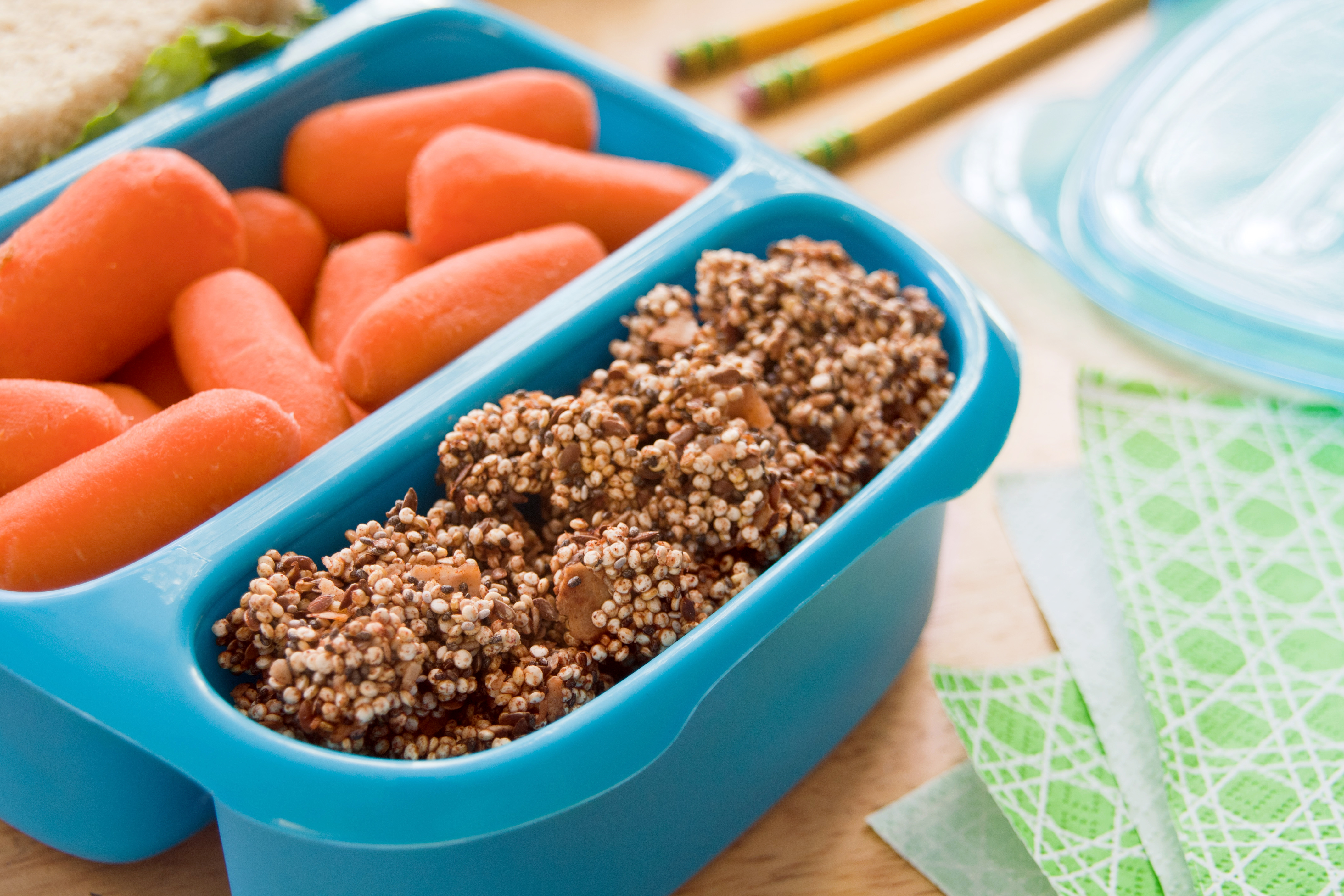The spankin’ new lunchbox has been purchased and there it sits on the counter. It’s just waiting for all those insanely creative and scrumptious morsels you’ll tuck in there for your child’s midday repast, day in and day out this school year. But this post isn’t about WHAT to put in there. Rather, it’s about HOW to keep what you put in there safe for your little one’s consumption.

Each year, 1 in 6 Americans contracts a foodborne illness (read: food poisoning). And of those folks, nearly 130,000 of them end up in the hospital. Food poisoning is no joke for anybody, but it’s especially serious for young children, whose immune systems are less developed than those of adults. What to do? Brush up on your lunchbox food safety basics with these five tips, then put them to use in your own kitchen.
Start clean
It’s nice to purchase a new, insulated lunch box for your child each school year. If you’re in the market, look for one that has a little pocket that you can slide a gel-pack into. If last year’s box is still in good shape, go ahead and use it, but give it a good cleaning first. Paper bags or other, non-insulated bags aren’t recommended.
Cleaning the lunchbox is crucial because, well, it will get smeared with stuff, the corners will collect crumbs and bacteria can definitely take up residence in it. For quick cleaning, use a disinfecting wipe to clean the inside and a fresh wipe for the outside (don’t forget the handle). If you have more time (on the weekend, say), wash the lunchbox in soapy warm water, and rinse it or wipe it down with a dilute bleach solution, then let it air dry upside down so the water drips out. (By the way, new bleaches with fragrances are not food safe, and “ultra” bleaches are more concentrated, so be sure to read the bleach bottle label for the correct way to dilute bleach for sanitizing).
Keep it hot or keep it cold
Cold food that gradually warms up throughout the morning (or hot food that gradually cools) can be a food safety risk. Make sure to keep the lunchbox contents the appropriate temperature:
- To keep food cold, use two sources of cold (a frozen bottle of water or juice box, a freezer gel pack) then “sandwich” the food item between those two cold sources as best you can. Here is where the lunch box pocket comes in handy. Also, consider freezing a sandwich (lunch meat, hummus and tuna salad sandwiches freeze well) the night before.
- If there is a refrigerator that you child can put his or her lunchbox into, that’s great—have them unzip the lunchbox and flip the lid open so that the cool air can circulate around the food.
- To keep hot food hot, use an insulated thermos. To do it right, fill the thermos with boiling water and let it stand for a few minutes, then dump out the water and put the hot food in.
Help them wash up before eating
While we hope that our kids wash their hands before they eat lunch or snacks, we can’t be sure they do when they’re away from our watchful eyes. Hence, it can be a good idea to put a packaged towelette into the lunchbox, or a small bottle of hand sanitizer (some of the little hand sanitizer bottles have a little strap so you could attach it to the lunchbox—that way it won’t find its way into the garbage can each day). Oh, and don’t forget to tuck a napkin into the box too.
Thoroughly rinse all fresh fruits and veggies
…Even those that will be peeled before being eaten. Tossing a banana or clementine into the lunchbox is a great idea, but you ought to wash the outside of it first—even though the peel will be discarded. Bacteria from the outside of the fruit can sneak onto the edible portion during peeling. And of course, all grapes, apples, celery, sweet peppers, cukes, grape tomatoes and the like should be thoroughly rinsed before packing them. If you are prepping some melon for the lunchbox, be sure to wash the outside of it before cutting into it. Here are some guidelines for good produce washing technique.
Toss the leftovers and garbage
When my kids were small, they didn’t seem to understand that I didn’t need to see the wrappers, sandwich baggies and napkins they had used at lunchtime. I didn’t need to see the bread crusts either, for that matter. Leftover food and all wrappers and napkins should be tossed right after lunch. Don’t reuse plastic baggies, either. The lunchbox will stay cleaner and the kid won’t be tempted to “snack” on potentially dangerous leftover food should hunger strike later in the day.
Got a question about food safety? Check out “Ask Karen,” a service of the USDA Food Safety and Inspection Service. You can read common Q & As, submit a question of your own or have a live chat. Access Ask Karen on your computer or mobile device.